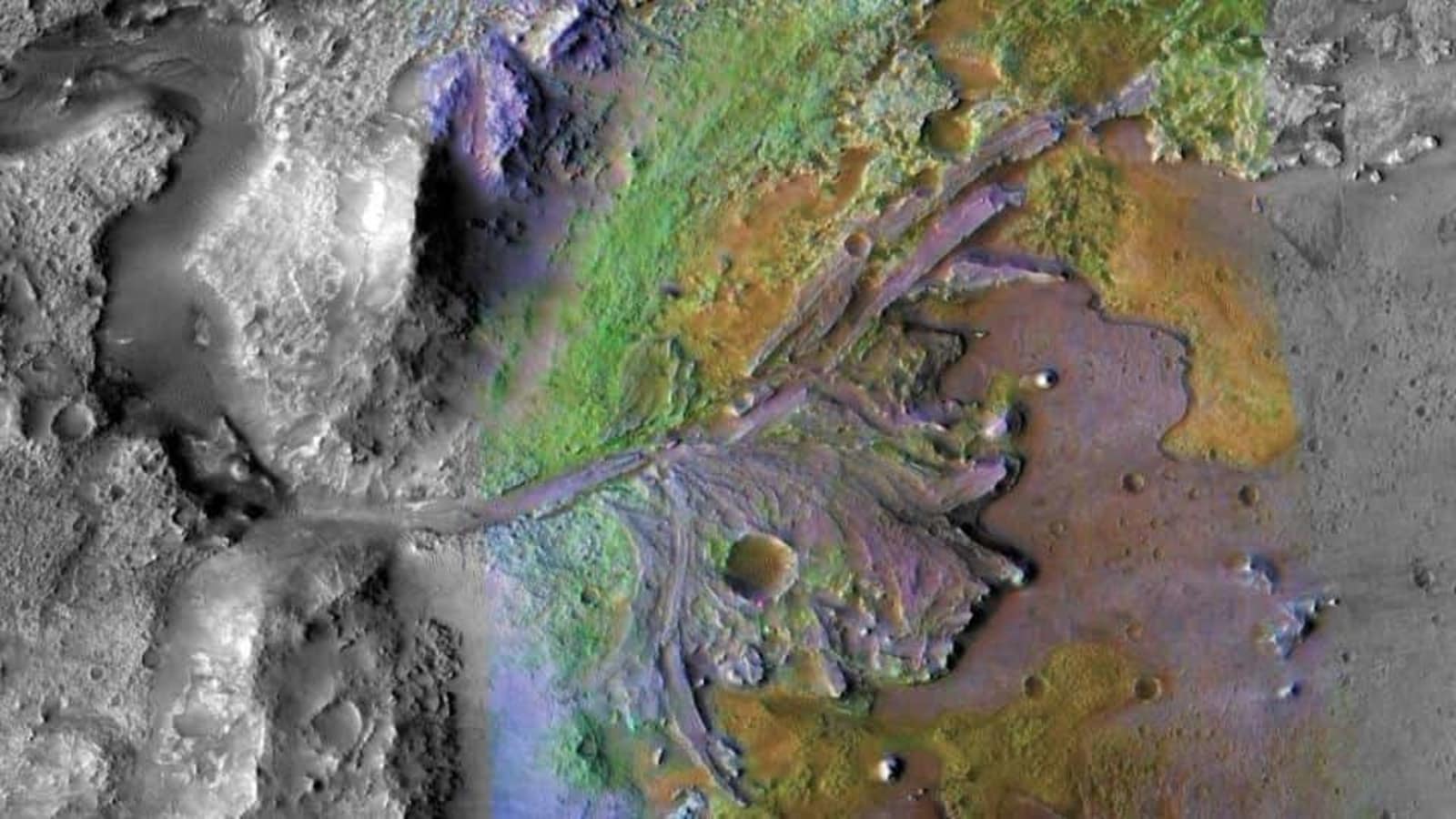Lake Jezero
Jezero is a crater on Mars in the Syrtis Major Quadrangle with a diameter of approximately 45.0 km. The crater is said to have been flooded with water and contains a clay-rich Fan delta deposit. The lake in the crater was present when the valley networks were formed on Mars. In addition to a delta, the crater shows dotted bars and inverted channels. From an examination of the delta and channels, it was concluded that the lake within the crater likely formed during a time when there was constant surface runoff. In 2007, after the discovery of its ancient lake, the crater was named after Jezero in Bosnia and Herzegovina.
Highlights
In the year 2018 NASA announced that Jezero had been selected as the landing site for the Perseverance rover. In the year 2020, several indications regarding boulders on the slopes of the delta deposit were found, on the Jezero wall and on the Dacono wall, a small crater 2 km in diameter in the ground by Jezero. . Perseverance successfully landed in the crater on 18th February, 2021. On 5th March, 2021, Octavia E. Butler Landing was the name given to the landing site by NASA.
Research and Analysis
In a March 2015 article, Brown University researchers described how an ancient Martian marine system existed on Jezero. The study put forward the idea that the crater was filled with water at least twice. There are two channels on the north and west sides of the crater that probably supplied it with water. Each of these channels has a delta-shaped deposit in which the sediments were transported by the water and deposited in the lake. A certain depth is expected from craters of a certain diameter; a shallower than expected depth means that the sediment has entered the crater. Calculations suggest that the crater may contain about 1 kilometer of sediment. Most of the sediments are believed to have entered through channels.
The first scientific analysis of images from NASA’s Perseverance rover has confirmed that the Jezero crater on the planet Mars, now a wind-eroded and dry depression, was once a calm lake about 3.7 billion years ago. The images that were received from the rover shows evidence regarding the crater having survived flash floods. This flood was strong enough to sweep away large rocks tens of kilometers upstream and onto the lake bed where the massive rocks now lie.


